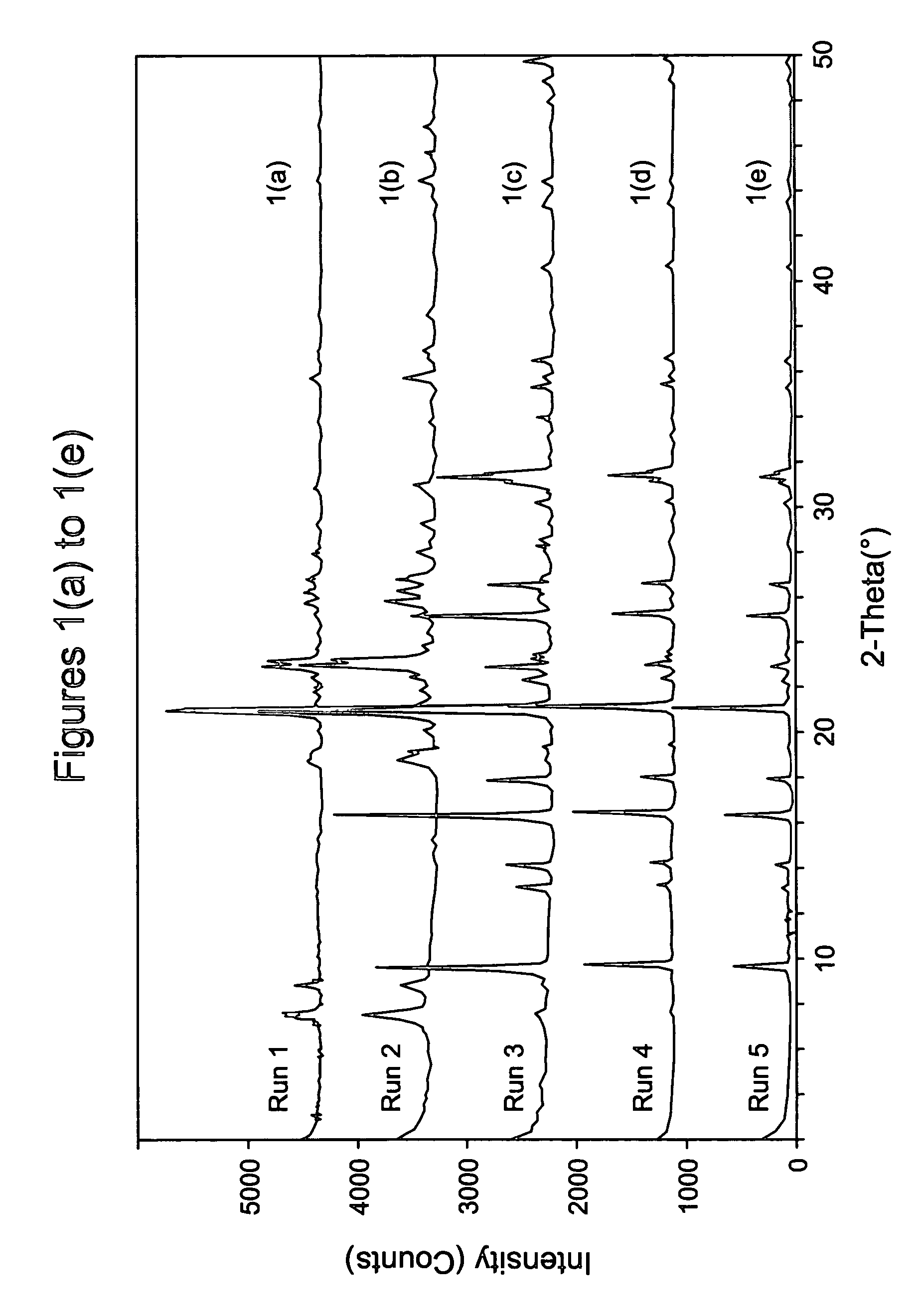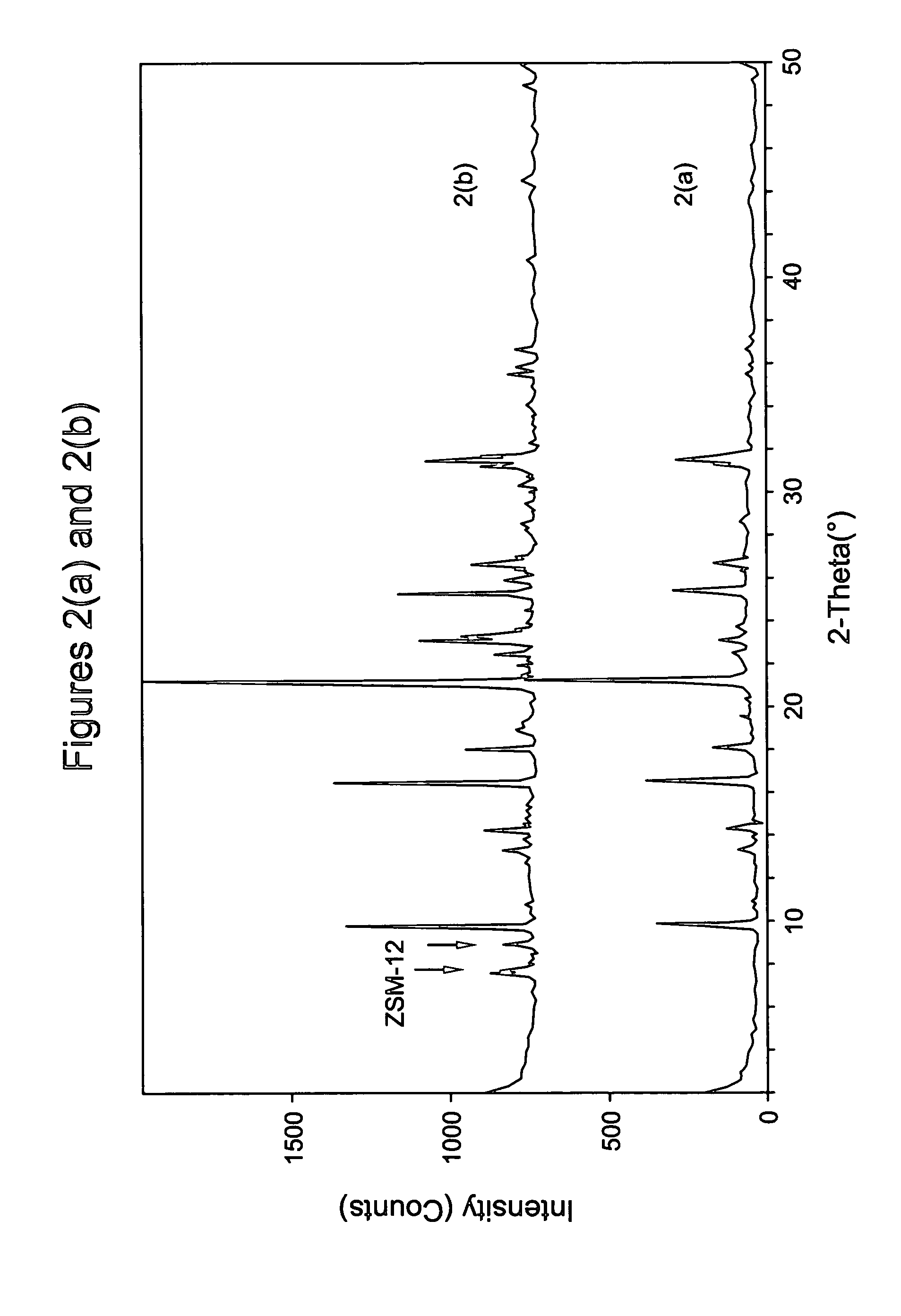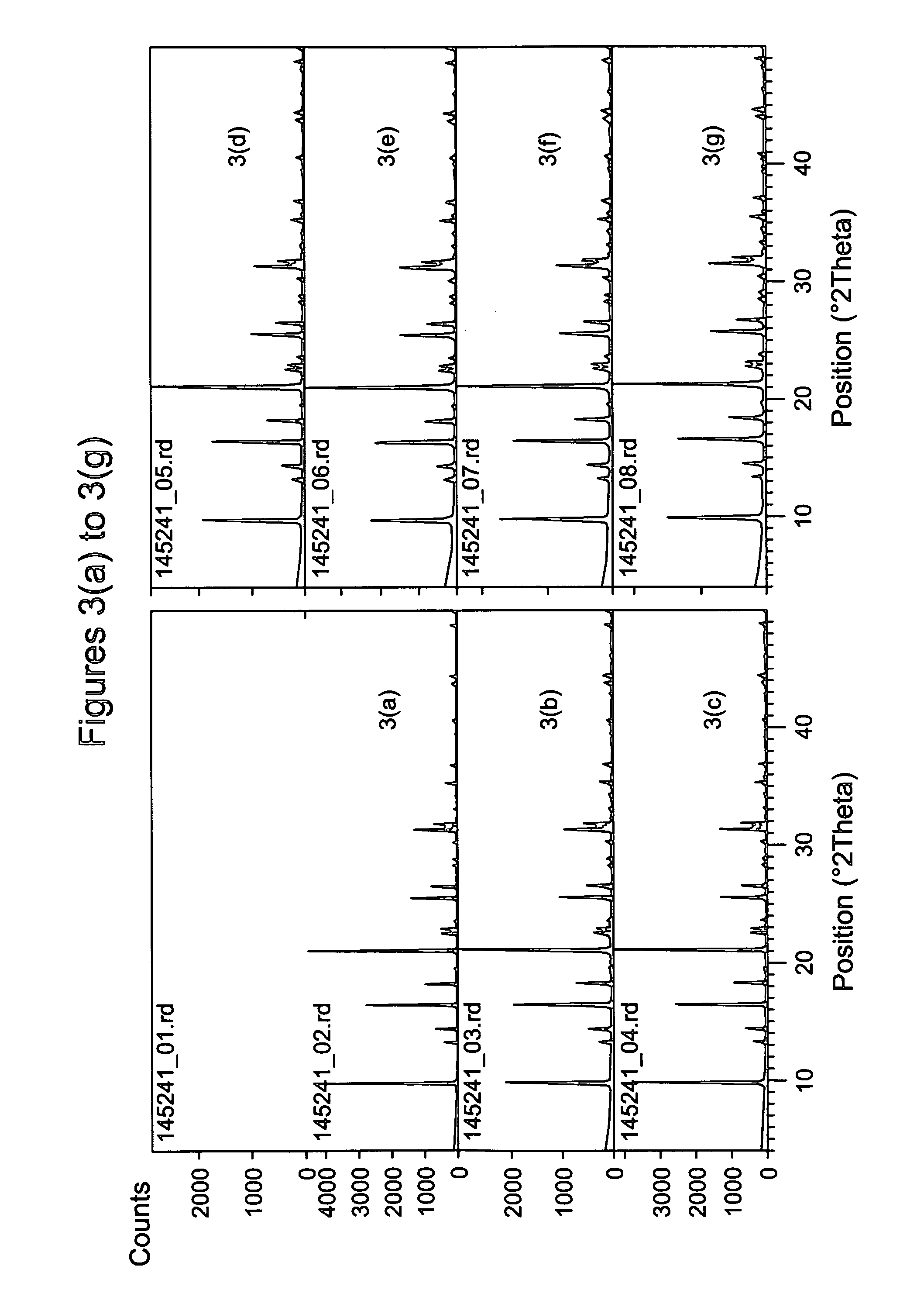Synthesis of chabazite-containing molecular sieves and their use in the conversion of oxygenates to olefins
a technology of molecular sieves and oxygenates, which is applied in the direction of physical/chemical process catalysts, hydrocarbon oil treatment products, silicon compounds, etc., can solve the problems of limiting catalyst life, increasing the potential for undesired secondary reactions, and lowering the diffusion rate of reactants and products
- Summary
- Abstract
- Description
- Claims
- Application Information
AI Technical Summary
Benefits of technology
Problems solved by technology
Method used
Image
Examples
example 1
Synthesis of N,N,N-Dimethylethylcyclohexylammonium Hydroxide (DMECHA Hydroxide)
[0096]45.0 g ethylbromide was added to a mixture of 50.0 g N,N-dimethylcyclohexylamine and 100 g ethanol. The solution was sealed in a polypropylene bottle and was placed in a 50° C. oven overnight. The ethanol was evaporated at 50° C. with the aid of flowing nitrogen, and to the remaining thick liquid (with some crystals) was added 50 g deionized water. A clear solution of the bromide salt was thus obtained. The aqueous solution was ion-exchanged with Bio Rad AG® 1-X8 Resin (OH-exchanger) three times (3×60 g) until AgNO3 test showed only trace amounts of silver bromide. The hydroxide solution was finally concentrated to a desired concentration by evaporating water on a Rotavap®.
example 2
Synthesis of High Silica Chabazite Using DMECHA Hydroxide
[0097]The following ingredients were mixed, in sequence, and blended into a uniform gel using a microhomogenizer (Tissue Tearor Model 98730 available from Biospec Products, Inc, USA): 50 wt % NaOH solution, a 42.7 wt % aqueous solution of N,N,N-dimethylethylcyclohexylammonium hydroxide (DMECHAOH) produced in Example 1, deionized water if necessary, and Hi-Sil® 233 (PPG Industries, USA). The Hi-Sil contained 0.53 wt % Na, 0.01 wt % K, 0.42 wt % alumina, and 82.2 wt % silica (Si / Al ratio of the material is 164). The ingredients were mixed in various molar ratios as shown in Table 2 below. Finally 200 ppm colloidal seeds (having LEV structure) were added to each synthesis mixture and the mixture was sealed in a Teflon® lined Parr bomb with no aging and heated in an oven at a preset temperature, either statically or tumbled at 40 rpm. After a certain time the bomb was taken out and cooled with water to room temperature. The conten...
example 3
Synthesis of High Silica Chabazite Using DMECHA Hydroxide
[0101]Run 5 of Example 2 was repeated but with the crystallization being repeated at 160° C. for 2 days. As shown in FIG. 2, the product was again pure chabazite. Elemental analysis revealed the product to contain 0.60 wt % alumina, 76.3 wt % silica, 0.33 wt % Na, and 0.01 wt % K, indicating that the silica to alumina molar ratio of the chabazite product was 108. Increasing the crystallization time to 3 days again resulted in the formation of a trace amount of ZSM-12.
PUM
| Property | Measurement | Unit |
|---|---|---|
| temperature | aaaaa | aaaaa |
| temperature | aaaaa | aaaaa |
| molar ratios | aaaaa | aaaaa |
Abstract
Description
Claims
Application Information
 Login to View More
Login to View More - R&D
- Intellectual Property
- Life Sciences
- Materials
- Tech Scout
- Unparalleled Data Quality
- Higher Quality Content
- 60% Fewer Hallucinations
Browse by: Latest US Patents, China's latest patents, Technical Efficacy Thesaurus, Application Domain, Technology Topic, Popular Technical Reports.
© 2025 PatSnap. All rights reserved.Legal|Privacy policy|Modern Slavery Act Transparency Statement|Sitemap|About US| Contact US: help@patsnap.com



